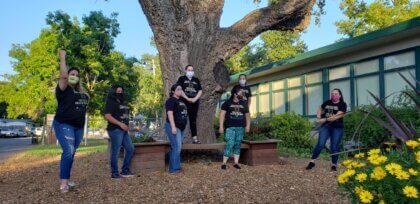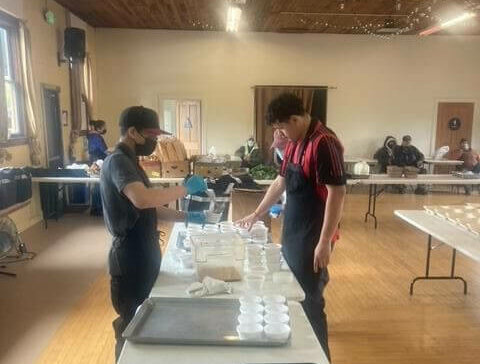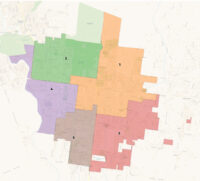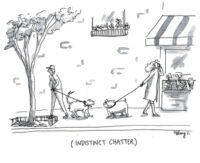
Despite the work of some 15 dedicated nonprofits and 500 ‘miracle working’ volunteers getting food to those who need it, one in five Sonoma Valley residents faces food insecurity, according to the results of a new study sponsored by Sonoma Valley Catalyst Fund.
This is one of the disturbing findings from an in-depth report just released by the consulting firm Community Planning Collaborative. The study, conducted in partnership with a food task force comprised of all major local providers, is intended to kick off the second major initiative by the Catalyst Fund in Sonoma Valley.
“Catalyst raised over $1.6m to support the nonprofit community during the pandemic and our grantees tell us that our grants really made a difference to the outcomes that were possible here,” commented Catalyst Co-Chair Katherine Fulton. “Now it’s time to focus our full attention on another urgent need in the Valley—making sure our neighbors have enough food in a place known world-wide for its agricultural riches.”
Catalyst was formed in 2020 by a small group of volunteers to create rapid-response funding for local nonprofits struggling to respond to the Covid-19 pandemic.
In April of 2022, once it became clear that the demand for food was not decreasing as the pandemic eased, Catalyst hired local residents Cathy Capriola and Laurie Decker to perform an in-depth analysis of food-related trends, needs and resources.
Findings include the insight that nearly 20% of the Valley’s residents live under the 200% national poverty level, a widely-used threshold that indicates how many people here struggle to feed themselves and their families, given a cost of living in the Sonoma Valley estimated at 50% above the national level.
This estimated 1 in 5 Valley residents translates into about 8,000 people.
“We have 15-or-so nonprofits here actively distributing food to those in need,” said Dub Hay, Catalyst co-chair. “But no one knew enough about how they work together, who they serve, and who is still falling through the cracks.”
The report concluded that local organizations and more than 500 volunteers are “working miracles” to address a chronic need that increased dramatically during the pandemic. But the food insecurity issue is complicated and multi-faceted. The study found that existing food programs are extensive, effective, and highly valued by clients, but that the large number of providers and high degree of decentralization among services leads to some underutilized capacity and missed opportunities.
“There is a level of complexity here,” said consultant and former Sonoma City Manager Cathy Capriola. “Food seems simple but it’s not—it’s a complex 3-D puzzle. For example, I was astonished at the level of recovered food that is being gathered from grocery stores and local farmers and put to good use.”
The study highlights the surprising number of factors that play into making food distribution effective. Food recipients stressed the issues of accessibility with one in four reporting transportation or mobility issues. Healthiness of food is another important factor, with high interest in more fresh produce, less canned food and more food choice. Targeting food appropriately to households is another piece of the puzzle, with some households including younger children, while others have members who are elderly and have mobility limitations or specialized dietary needs.
Individual food recipients stressed that while they are incredibly grateful for supportive food services, the programs can also be hard to locate and difficult to access.
“The need for comprehensive, readily-available information in a bi-lingual format came through loud and clear,” explained Dub Hay. “And that is something we can address.”
The report also pointed out that many barriers prevent people from accessing federally-funded programs such as CalFresh and WIC (Women, Infants and Children). On the nonprofit side, local organizations tend to run “lean” in terms of funding, staffing, and facilities. “They do so much with so little,” commented Catalyst Grants Chair Diana Sanson. “We want to use this data to target the most effective ways to support them in their core mission.”
The task force and consultants made about two dozen recommendations for ways to improve the current system to ensure adequate access to usable food and to create a sustainable local food security system that is strategic, coordinated and cost effective. These recommendations will now be prioritized over time, and help pave the way for targeted initiatives coordinated by the Catalyst team.
“Now, in partnership with our local nonprofit partners, we can begin to identify the best next steps to build on the terrific work our organizations and volunteers are already doing,” explained Fulton. “It won’t happen overnight, but we believe that by getting the right information, involving the right players, and focusing funding in the right places we can impact this urgent challenge, reducing the chronic stress that some 8,000 of our neighbors routinely face.”
The report took nine months to complet. The consultants brought local food assistance organizations together multiple times to share information, as well as conducted a survey with 314 households in Spanish and English to learn more about their needs and experiences.
The full report along with an Executive Summary and supporting PowerPoint deck are available on Catalyst’s website. To learn more, donate, or get involved, visit www.sonomavalleycatalystfund.org.






Be First to Comment